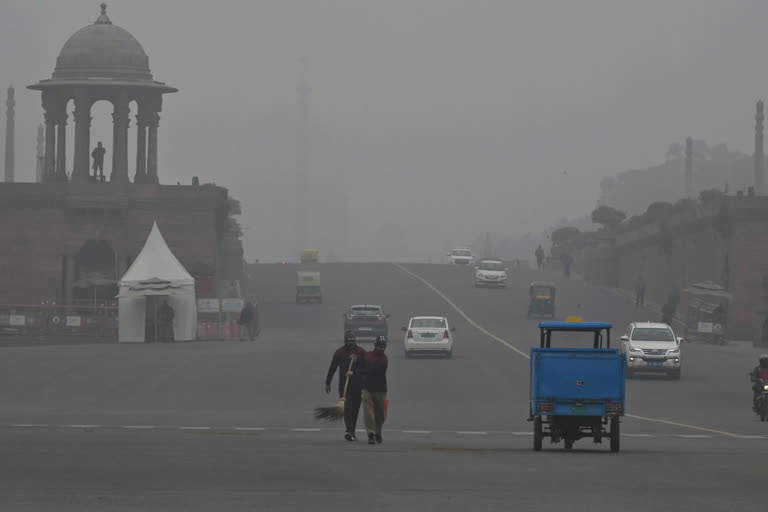New Delhi: As frosty winds from the snow-clad Himalayas barrelled through the plains, commuters faced major inconvenience, even as most people kept indoors and turned to space heaters and cups of hot tea to keep themselves warm in several parts of northern India.
Delhi recorded a cold wave for a second day on the trot on Friday, with the minimum temperature at Ayanagar in southwest Delhi plunging to a numbing 1.8 degrees Celsius, according to the India Meteorological Department (IMD) data. The Safdarjung Observatory, Delhi's primary weather station, logged a minimum temperature of four degrees Celsius, which was lower than that of Dalhousie (8.7 degrees Celsius), Dharamshala (5.4 degrees), Shimla (6.2 degrees), Dehradun (4.4 degrees), Mussoorie (6.4 degrees) and Nainital (6.5 degrees).
A dense layer of fog persisted over northwest India, and adjoining central and eastern parts of the country, hitting road, rail, and air traffic movement. Bad weather conditions delayed around 30 flights at the Indira Gandhi International Airport and at least 26 trains reaching Delhi, officials said.
Meanwhile, intense cold conditions continued to affect daily life in Rajasthan where the night temperature fell below zero degrees in Bikaner and Sikar districts. Fatehpur in Sikar recorded a minimum temperature of 0.7 degrees Celsius on Thursday night, followed by Churu at 1 degree, the Met office said.
The night temperature was recorded at 1.1 degrees Celsius in Anta (Baran), 1.6 degrees in Vanasthali (Tonk), 1.7 degrees in Nagaur, 3.6 degrees in Jaipur, 3.8 degrees in Phalodi (Jodhpur), 4.5 degrees in Alwar and 4.7 degrees in Ganganagar. The authorities have also alerted about a possibility of a two to four degrees Celsius increase in the minimum and maximum temperatures in most parts of the state over the next 48 hours.
Visibility was majorly affected due to dense fog in the national capital. The Palam observatory, near the IGI Airport, recorded a visibility level of 200 metres at 5:30 am. According to the weather office, 'very dense' fog is when visibility is between 0 and 50 metres, 51 and 200 metres is 'dense', 201 and 500 metres 'moderate', and 501 and 1,000 meters 'shallow'.
Also read: Animals resort to bonfires as chilling cold engulfs North India
The weather stations at Lodhi Road, Ayanagar, and Ridge in Delhi recorded minimum temperatures of 3.8 degrees Celsius, 1.8 degrees and 3.3 degrees, respectively. On Thursday, Delhi logged a minimum temperature of three degrees Celsius -- the lowest in January in two years -- making it cooler than several hill stations.
The cold snap is straining power grids and posing challenges to the homeless and animals. According to a senior IMD official, there will be some relief from cold weather under the influence of a fresh Western Disturbance, which is likely to affect northwest India starting January 7.
In the plains, the Met office declares a cold wave if the minimum temperature dips to four degrees Celsius or when the minimum temperature is 10 degrees or below and is 4.5 notches below the normal. A severe cold wave is when the minimum temperature dips to two degrees Celsius or the departure from the normal is more than 6.4 degrees.
A cold day is when the minimum temperature is less than or equal to 10 degrees Celsius below normal and the maximum temperature is at least 4.5 degrees below normal. A severe cold day is when the maximum is 6.5 degrees Celsius or more below the normal.
According to the weather office, 'very dense' fog is when visibility is between 0 and 50 metres, 51 and 200 metres is 'dense', 201 and 500 metres 'moderate', and 501 and 1,000 metres 'shallow'.



